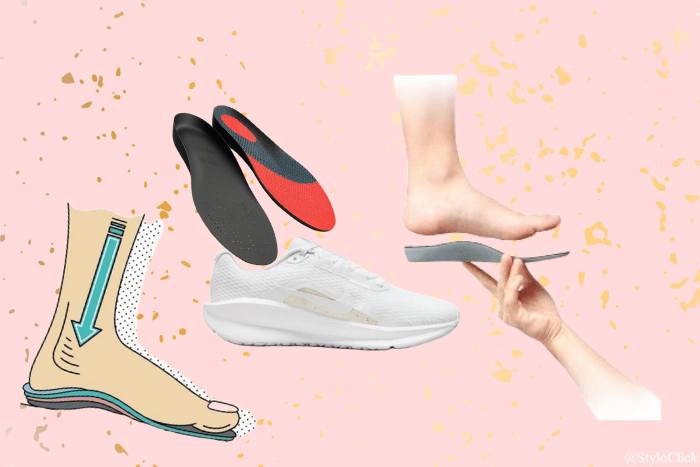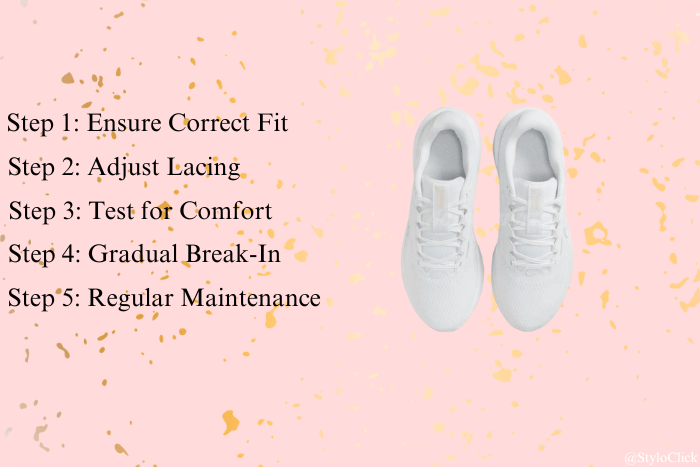Introduction -
Are you ready to take your running game to the next level? Understanding how to wear orthotics in running shoes properly is a game-changer. In this guide, we’ll cover all you need to know. It will help you maximize comfort, prevent injuries, and boost performance on the track or trail.

Why Orthotics Matter in Running Shoes
Wearing the right orthotics can significantly impact your running experience. The inserts are specially designed. They provide support, stability, and cushioning. These are crucial for keeping the feet aligned and reducing injury risk.
Understanding Orthotics
Before we dive into the steps, let’s first clarify what orthotics are and why they are crucial for runners. Orthotics are custom-made shoe inserts designed to support and improve the functioning of your feet. They can fix imbalances in your foot. They also provide cushioning and add stability.
Benefits of Using Orthotics
Improved Support: Orthotics offer better arch support. They reduce strain on your feet and ankles during high-impact activities like running.
Enhanced Comfort: By spreading pressure evenly across your feet, orthotics can reduce pain. They can also prevent blisters or hot spots.
Injury Prevention: Well-fitted orthotics can prevent common running injuries. These include plantar fasciitis, shin splints, and stress fractures.
How to Wear Orthotics in Running Shoes: Step-by-Step Guide
Now, let’s dive into how to wear orthotics in running shoes for optimal comfort and performance.


Step 1: Ensure Correct Fit
The first step in wearing orthotics is to ensure they fit properly in your running shoes. Follow these guidelines:
Remove the existing insoles from your running shoes.
Place the orthotics inside, making sure they lie flat and cover the entire footbed.
Check for any excess space or tightness. Your orthotics should fit snugly without being too tight.
Step 2: Adjust Lacing
Proper lacing can significantly affect how your orthotics feel during a run. Here’s how to adjust your laces:
Loosen the laces before inserting the orthotics.
After inserting, tighten the laces evenly to secure the orthotics in place.
Avoid overtightening, as this can cause discomfort and restrict blood flow.
Step 3: Test for Comfort
Before hitting the pavement, take a few moments to ensure your orthotics feel comfortable:
Stand up and walk around to get a sense of how they feel.
Pay attention to any areas of pressure or discomfort.
If needed, make small adjustments to the positioning of the orthotics.
Step 4: Gradual Break-In
It’s essential to break in your orthotics gradually, especially if they are new:
Start with shorter runs to allow your feet to adjust.
Check any discomfort and adjust as needed.
Over time, your feet will adapt to the orthotics, providing the support and stability you need.
Step 5: Regular Maintenance
To maximize the lifespan and effectiveness of your orthotics, follow these maintenance tips:
Clean them regularly with mild soap and water.
Allow them to air dry completely before placing them back in your shoes.
Inspect for signs of wear and tear, and replace as necessary to maintain optimal support.
Choosing the Right Orthotics for Your Needs
Selecting the right orthotics is crucial for optimizing your running performance. Here’s how to find the perfect fit for your feet.
Types of Orthotics
Custom-Made Orthotics: Crafted based on a mold of your feet, custom orthotics offer tailored support and comfort.
Over-the-Counter Inserts: These pre-made inserts come in various sizes and shapes. They provide general support and cushioning.
Factors to Consider
Foot Type: Consider whether you have flat feet, high arches, or neutral arches. This will influence the type of orthotics you need.
Activity Level: Your orthotics should fit your activity level. They should give enough support and cushioning for running.
Conclusion
In conclusion, wearing orthotics in your running shoes can greatly improve your comfort. They can also boost your performance on the track or trail. Follow these steps to understand the importance of proper orthotic use. Then, you can ensure that every run is rewarding. Remember, the key is to find the right orthotics for your feet and to give them the care and attention they deserve. Happy running!
Related Query: How to Wash Shoes
Related Query: How to Avoid Shoe Bites
Related Query: How to Get Cat Pee Out of Shoes
5 FAQs About Orthotics in Running Shoes
1. What are orthotics?
- Orthotics are custom-made shoe inserts designed to support and improve foot function.
2. Why are orthotics important?
- They can correct foot imbalances, provide cushioning, and enhance stability.
3. How do orthotics help runners?
- They improve running comfort, reduce the risk of injury, and enhance performance.
4. Are there different types of orthotics?
- Yes, there are rigid, soft, and semi-rigid orthotics, each serving different purposes.
5. How do I know if I need orthotics?
- If you have foot pain, imbalances, or discomfort, orthotics may be beneficial.
Pingback: How to Remove Smell from Shoes ( 9 Simple Steps )